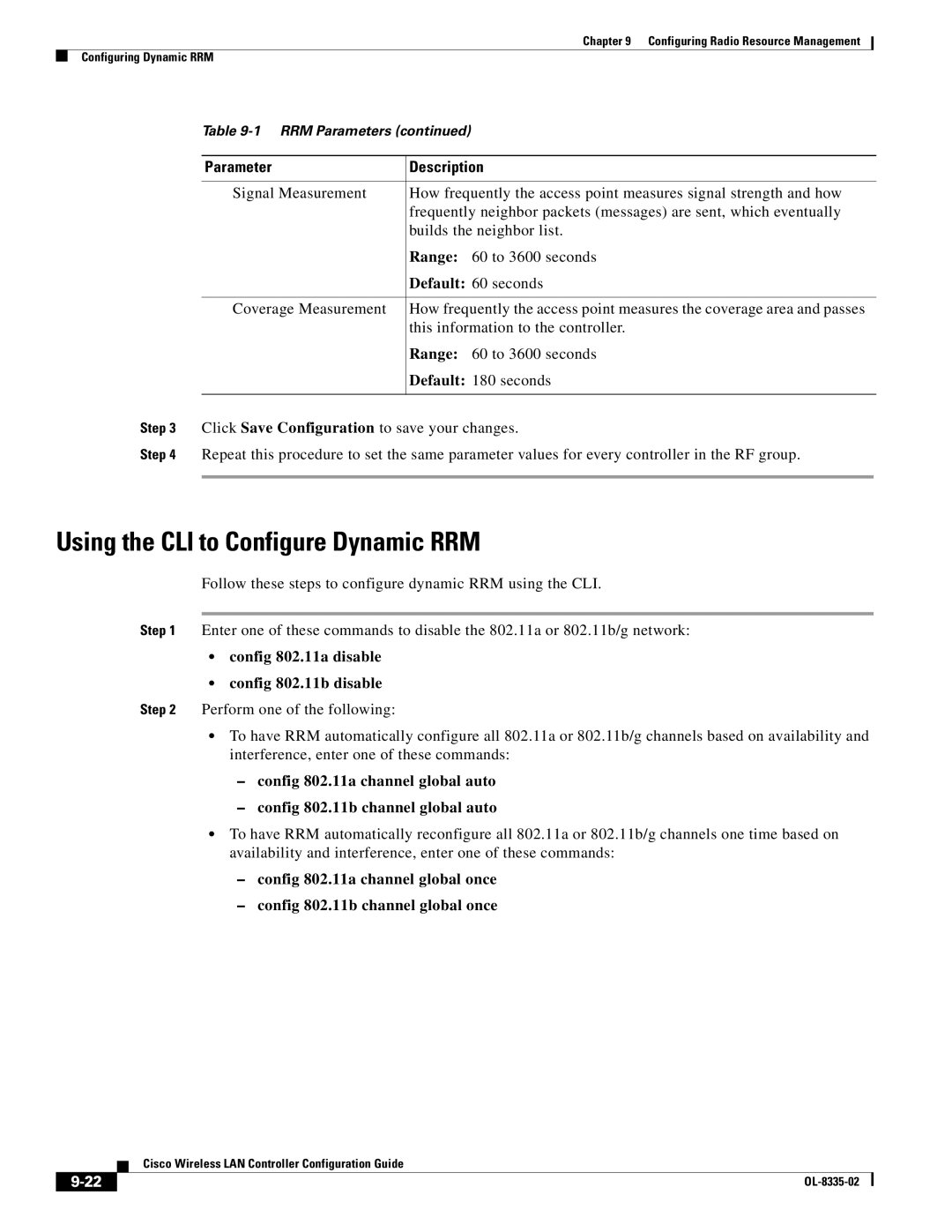
Chapter 9 Configuring Radio Resource Management
Configuring Dynamic RRM
| Table |
|
| |
|
|
|
| |
| Parameter | Description |
| |
|
|
|
| |
| Signal Measurement | How frequently the access point measures signal strength and how |
| |
|
| frequently neighbor packets (messages) are sent, which eventually |
| |
|
| builds the neighbor list. |
| |
|
| Range: | 60 to 3600 seconds |
|
|
| Default: | 60 seconds |
|
|
|
|
| |
| Coverage Measurement | How frequently the access point measures the coverage area and passes |
| |
|
| this information to the controller. |
| |
|
| Range: | 60 to 3600 seconds |
|
|
| Default: | 180 seconds |
|
|
|
|
| |
Step 3 | Click Save Configuration to save your changes. |
| ||
Step 4 | Repeat this procedure to set the same parameter values for every controller in the RF group. |
| ||
|
|
|
|
|
Using the CLI to Configure Dynamic RRM
Follow these steps to configure dynamic RRM using the CLI.
Step 1 Enter one of these commands to disable the 802.11a or 802.11b/g network:
•config 802.11a disable
•config 802.11b disable
Step 2 Perform one of the following:
•To have RRM automatically configure all 802.11a or 802.11b/g channels based on availability and interference, enter one of these commands:
–config 802.11a channel global auto
–config 802.11b channel global auto
•To have RRM automatically reconfigure all 802.11a or 802.11b/g channels one time based on availability and interference, enter one of these commands:
–config 802.11a channel global once
–config 802.11b channel global once
Cisco Wireless LAN Controller Configuration Guide
|
| |
|
